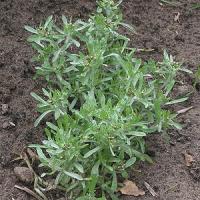Marsh cudweed
Gnaphalium uliginosum
Introduction:
Gnaphalium uliginosum, commonly known as marsh cudweed or cottonweed, is a herbaceous perennial plant belonging to the Asteraceae family. Native to North America and Eurasia, this plant is often found in wetlands, marshes, and other damp habitats. It is characterized by its woolly, cotton-like appearance.
Identification:
Appearance: Marsh cudweed typically grows to heights of 30 to 100 cm. The leaves are lance-shaped, grayish-green, and covered with dense woolly hairs. The flowers are small and inconspicuous, arranged in terminal clusters, and surrounded by papery bracts.
Distinctive Features:
- Growth Form: Herbaceous perennial, reaching heights of 30 to 100 cm.
- Leaves: Lance-shaped, grayish-green, densely woolly.
- Flowers: Small and inconspicuous, arranged in terminal clusters, surrounded by papery bracts.
Habitat and Distribution:
Marsh cudweed is adapted to wet and marshy habitats, including marshes, wet meadows, and the edges of ponds and streams. It is distributed in both North America and Eurasia, and its preference for moist conditions makes it a characteristic plant of such environments.
Ecological Role:
-
Wetland Stabilization: Marsh cudweed, along with other wetland plants, plays a role in stabilizing wetland ecosystems.
-
Wildlife Habitat: The plant provides habitat for various insects and other wetland-dwelling organisms.
Cultural Uses:
Marsh cudweed is not commonly cultivated for specific uses. Its dense, woolly appearance and adaptation to wet environments make it more of an ecological component of wetland ecosystems.
Management Strategies:
-
Conservation: In natural wetland settings, conservation efforts may focus on preserving the integrity of these ecosystems and protecting native flora.
-
Invasive Concerns: Marsh cudweed is not typically considered invasive, but it's essential to monitor wetland areas for potential threats to native biodiversity.
Caution: While marsh cudweed is a native plant and not generally considered harmful, the conservation of wetland habitats, where it plays a natural role, is important. The balance of wetland ecosystems can be disrupted by invasive species or disturbances.







